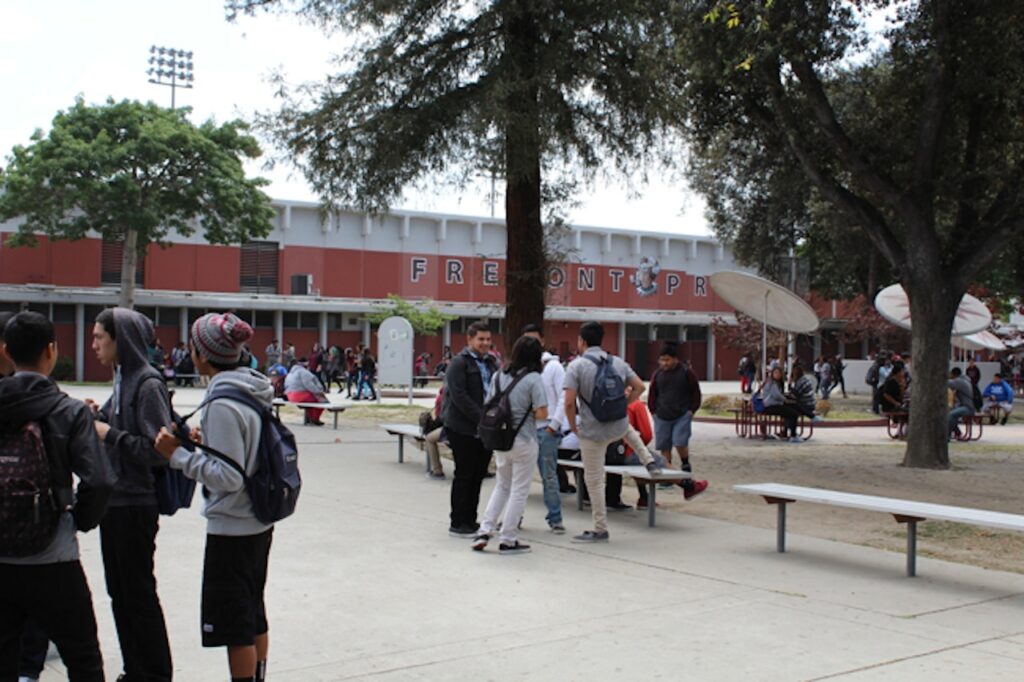Members of the Los Angeles Unified school board got a sobering economic report this week as finance experts warned that a slowing state economy and failure of a November ballot measure to extend an increase in personal income taxes could cost the district hundreds of millions of dollars.
It was neither a message they didn’t know nor one aimed solely at L.A. Unified, the largest school district in the state – all of California’s 1,200 school districts would be affected by economic developments beyond their control.
But with more than 1,200 schools and 550,000 students, L.A. Unified would face the most drastic change in operations, leading to probable cutbacks in personnel, programs and school improvements. Listening to the possibilities, board President Steve Zimmer suggested the district’s future could be “fairly apocalyptic.”
The cause for alarm involves two factors beyond the control of policymakers, in Los Angeles, Sacramento or anywhere else in the state.
One is the ballot measure, which would continue a tax on high-income earners created by Proposition 30, which was approved by voters in 2012 and scheduled to end in 2018. No effort is underway to extend the sales tax increase that is part of the proposition, which ends this year.
The new ballot initiative – the Children’s Education and Health Care Protection Act of 2016 – remains in the signature-gathering phase to get it on the November ballot. It would extend by 12 years personal income tax increases on earnings over $250,000, generating a projected $5 billion or more annually, with $2 billion a year earmarked for children’s health programs. Of the rest, 89 percent would go to K-12 schools and 11 percent to California Community Colleges.
Over the last four years, Prop. 30 income tax revenue has accounted for about 13 percent of the district’s Local Control Funding Formula revenue, and the loss of the income tax extension would cost about $600 million in future revenue, according to a report presented to board members by district finance experts.
The other factor prompting concern is the uncertainty of California’s economic growth. According to the May revision of Gov. Jerry Brown’s budget for the next fiscal year, the state budget for the next two years will remain balanced. But state financial experts are predicting a $4 billion deficit by 2019-20, an amount that could only be offset by an improving economy, which is uncertain, or passage of the Prop. 30 extension.
An economic slowdown, combined with the failure of the tax extension, would hit every school district in the state.
In a colloquy at the board meeting with Dale Shimasaki, CEO of Strategic Education Services, a Sacramento-based education consulting and lobbying firm that works with school districts, Zimmer asked, “On a scale of 1 to 10, where would you put, with 1 being the least and 10 the most, how important is (extending) Prop. 30?”
“Oh, 10. It’s the most important,” Shimasaki responded.
Zimmer went on, explaining the district’s mission to maintain an “equity agenda” for all the children in the district in the face of potential economic distress and a need to develop a strategy to stem an enrollment decline of 3 percent annually that has been underway for more than a decade and has cost L.A. Unified nearly a billion dollars in lost state revenue.
He asked Shimasaki where the balance is between policy decisions based on further investment or program cutbacks.
“You’re not the only (district) now going through that,” Shimasaki said. “But I’m not sure where you go between those two things.”
But he then agreed with Zimmer, who said, “So investing, for example, in growing enrollment is something you would strategically recommend, whatever that pathway might be that we determine.”
“Right,” Shimasaki said, agreeing again with Zimmer’s assertion: “Even though the (economic) picture is bleaker in the future, not investing could be even more dangerous.”
To get more reports like this one, click here to sign up for EdSource’s no-cost daily email on latest developments in education.
